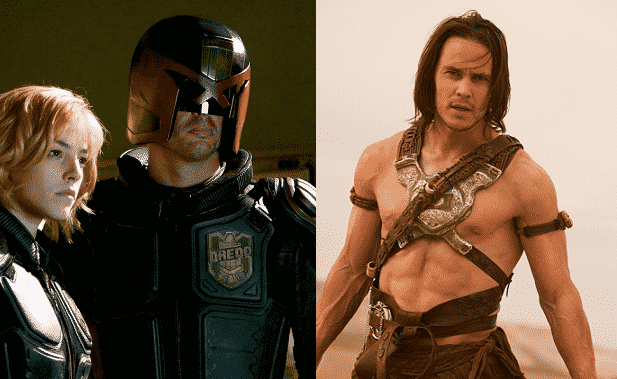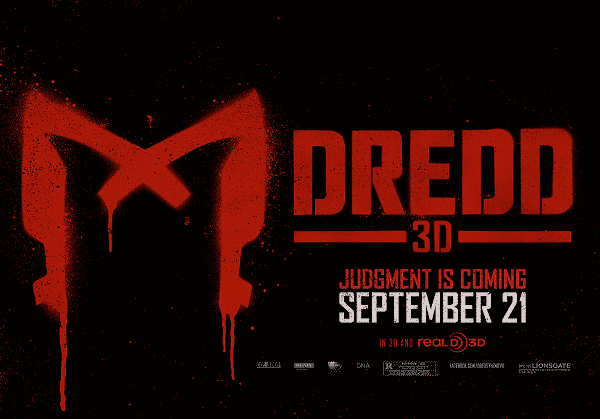Sometimes, you can tell from the first casting rumors that a movie is going to be great. By the time the first trailer arrives, you’re so hyped that you can’t imagine waiting another three months to see the finished product. Luckily, the rest of the world is right there with you, so you have plenty of people to wallow in the misery of anticipation with. You talk casting with your coworkers, dissect the trailer in online forums, and follow the director on Twitter, just hoping for a tiny morsel of a spoiler. On opening night, you’re happy to stand in a long line at your local theater’s ticket counter before cramming yourself into the crowded cinema. It’s *finally* here. And of course it’s going to be a massive hit. 90% of the civilized world has been waiting months for this day.
But what happens when success doesn’t come so easily? What if the film in question has all the ingredients of a blockbuster – great cast, solid director, brilliant script, and amazing effects – and yet, butts don’t end up in seats? Why do bad things happen to good movies?
There are a plethora of possible reasons. One of the most obvious is poor marketing. Sometimes, despite the ridiculous amount of money poured into the advertising budget, the trailers and posters just don’t get the point across properly. Or sometimes they do, but said budget isn’t big enough to get them in front of a decent number of eyes.
Another likely culprit is simply the project’s originality. For the better part of the last decade, the most successful movies have been sequels, prequels, remakes, reboots, reimaginings, and re- everything else. Nothing is truly *new.* When something original does manage to get greenlit, it quickly disappears into an ocean of sub-par re-‘s. Re-‘s make money. People like familiarity. Often, the people who complain about the lack of originality in film are the very same people who have no interest in forking over ten bucks to see a non-star play a character they’ve never heard of.

My point in all of this is simple: sometimes, a flop is still a great movie. Being a box-office failure doesn’t mean a movie sucks any more than making a shit-ton of money means it’s great. (I’m looking at you, Transformers.)
And what exactly constitutes failure? The simplest definition is that a movie needs to gross twice its budget to be successful. Published film budgets generally don’t include marketing and distribution costs, and there is also the percentage shared with the theaters to consider. So, as a general rule, once a film’s gross is double its budget, it’s pure profit from there on out. The larger the budget, the more difficult it is to make a profit. Also, the domestic earnings are more important, as studios get a larger share from these than they do from foreign receipts. So I’m listing domestic grosses here, since those are the ones valued most by studios.
So, with that in mind, let’s take a look at a few cinematic gems that made peanuts, despite being near-perfect (a few spoilers follow):
6. The Hurt Locker (2008)

Budget: $15 Million
Gross: $17 Million ($49M Worldwide)
I’ll start off by admitting that I’ve never been a huge fan of war movies. Not that there aren’t many that are well-made films, they just aren’t my cup of tea personally. I’ve had, and still have, a lot of people in my family in the military. I think it’s just difficult for me to see the increasingly realistic depictions of the hell they’re put through. I just don’t want to think about it.
Putting the hell of war out of your mind isn’t an option with this hyper-realistic film. Starring future MCU standouts Jeremy Renner and Anthony Mackie, it follows a group of bomb specialists in Iraq, whose job is to defuse IED’s before they have a chance to blow. Every scene keeps you on the edge of your seat as the explosives experts risk life and limb – literally – to stop the destruction wrought by the bombs. They’re terrified, but determined to make the war zone a safer place for their comrades, and the innocent civilians in the area.
But one of them isn’t so scared. He isn’t necessarily braver than his fellow soldiers, he’s just a little bit nuts. Staff Sergeant William James gets off on the danger. He actually likes it when the counter reads 00:01 when he cuts the wire. Of course, through the course of the film, we begin to realize that he doesn’t necessarily enjoy coming so close to oblivion. It’s a defense mechanism. Getting a thrill from the danger is the only thing that keeps him from losing his mind entirely.
At the end of the film, his tour ends, and he goes home on leave before reporting for re-enlistment. Instead of being a release of tension – either for him as a character or you as a viewer – it’s one of the uneasiest parts of the whole movie. I remember bunching myself into as small of a ball as possible as I watched him flounder his way through ordinary life. At home with his wife and baby, he should feel like all is finally right with the world. But he actually doesn’t know how to live without life-or-death peril. The scene that always sticks out in my mind is the one where the family goes to the grocery store. His wife asks him to go to the cereal section and pick out a box. He wanders aimlessly up and down the aisle, unable to comprehend such a mundane decision. Renner’s skill makes the moment absolutely heartbreaking. Sergeant James is only truly alive when he’s about to die.
While the film didn’t make a ton of money, it did gets its due at the Academy Awards, winning six of the nine Oscars it was nominated for, including Best Picture.
5. Highlander (1986)
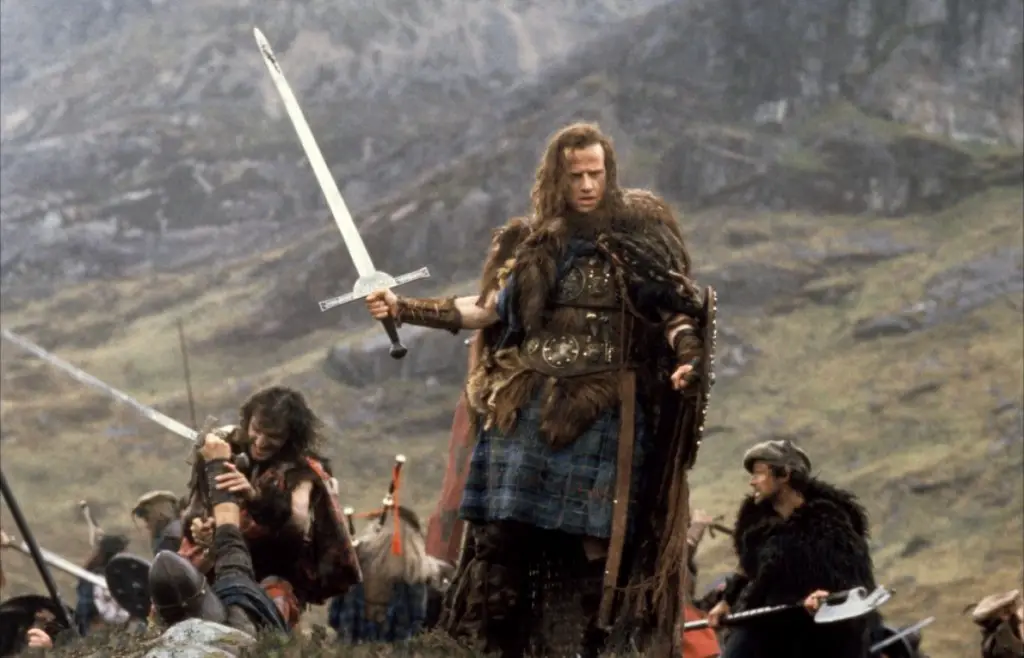
Budget: $16 Million
Gross: $6 Million ($18M Worldwide)
Before we get started, I’m going to admit my extreme bias. This is literally my favorite movie. Ever. Is it the greatest film I’ve ever seen? No, not by a long shot. But I love it just the same.
It follows the long life of Connor MacLeod, a Scotsman (played by a Frenchman) who discovers during a clan war in 1536, when he is just 18, that he is immortal. He finds out the hard way, when he’s run through by a man known as the Kurgan, a Russian (played by an American) swordsman who seems to have been there for the express purpose of killing him. While one would think his betrothed and his clan would be grateful that he survived his grievous wound, they instead accuse him of being in league with Lucifer, and banish him from clan lands.
He roams the highlands for a while, eventually meeting a woman named Heather, marrying her, and building their home with his own hands. Life is peaceful and happy for a short time, but the idyll is shattered when he is tracked down by Ramirez, a Spanish (or Egyptian? Either way, played by a Scotsman) metallurgist whose arrogance quickly earns him the nickname Peacock. But, despite their clashing personalities, Ramirez is here to help. He explains to MacLeod that the reason he didn’t die from his wounds is because he is, in fact, immortal. Despite his initial disbelief, he comes to realize that it’s true. The two then forge a close friendship, and Ramirez reveals that there are more immortals in the world, including both himself and the Kurgan. The Russian nightmare wanted to kill him to take his power, because that’s a thing with immortals. But they can only die by losing their heads, so Ramirez proceeds to teach MacLeod everything he knows about wielding a sword. He’s over a thousand years old, so that’s a lot.
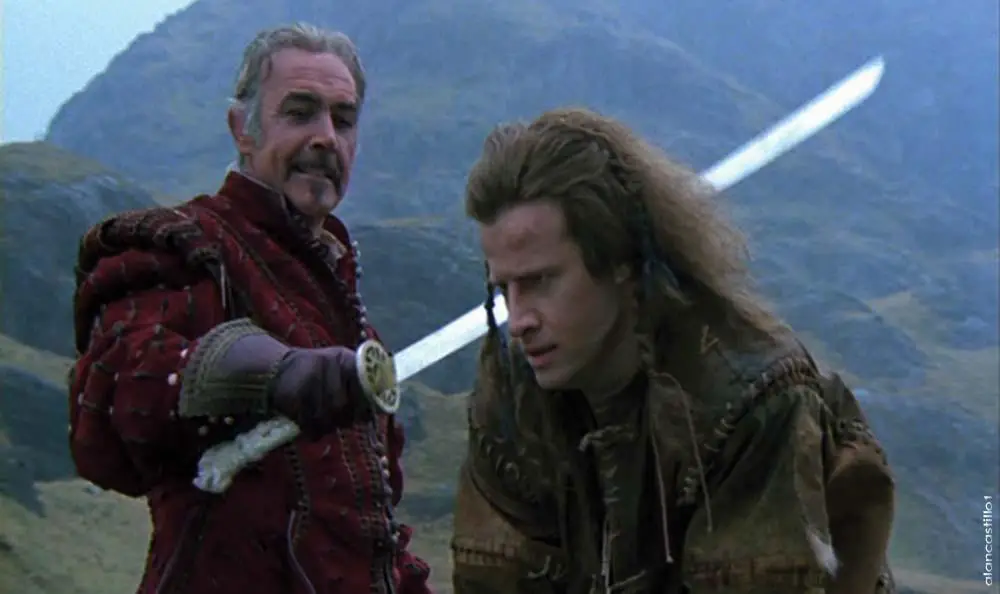
Still with me? We’ve got action, drama, romance, science fiction – this movie throws everything in the blender and presses liquefy. It proceeds to go back and forth between the 16th and 20th centuries, where Connor lives under an assumed name in modern-day New York City. Only a few immortals remain, and they must battle to the last man to receive a mysterious Prize.
Between not knowing what genre of movie it wanted to be, its far-fetched plot, and lack of star power (yes, Sean Connery portrayed Ramirez, but it was a relatively small role. Lead Christopher Lambert was a star in his native France, but this was just his second English-language film), moviegoers didn’t exactly flock to the theaters for this one. However, over the next several years, it began to develop a cult following. Thanks to its charming characters, unique subject matter, and phenomenal soundtrack (provided entirely by the legendary band Queen, who loved the film and wrote original songs especially for it), the little movie that couldn’t suddenly found new life on home video, and eventually spawned four sequels, two television series, and attained iconic status among the faithful fans it has to this day.
4. Tron Legacy (2010)

Budget: $170 Million
Gross: $172 Million ($400M Worldwide)
Yeah, these numbers don’t exactly scream “failure,” but just try telling that to Disney.
Way back in 1982 (the year I was born, yay), the original Tron was released, and it was like nothing we had ever seen before. The groundbreaking use of computer animation – not just as a visual effect, but also as an integral part of the film’s plot – made it an indelible part of an 80’s childhood.
Nearly 30 years later, I don’t think anyone really expected a sequel, which I think is one of the biggest reasons it didn’t make more money. However, to be fair, this movie really couldn’t have been made any earlier – at least not with the stellar effects and sleek techno atmosphere it has.

Sam Flynn, the now-adult son of gaming pioneer Kevin Flynn, has little interest in running his father’s company. In fact, he has little interest in his father at all, believing that the eccentric genius abandoned him when he was a child. What other explanation could there be for his twenty years of absence?
But when his father’s former partner Alan receives a message from Kevin’s old office number, Sam has a lot of old feelings come to the surface. Remembering how close they used to be, he heads for Kevin’s old arcade. It’s been closed for decades, and the antique machines are covered in dust. Pulling one out from the wall to plug it in, he discovers a hidden room.
He’s not quite sure what happens next, but he awakens in a world unlike anything he’s ever seen. Everything seems to be made of light, even the people. Strange crafts are driving by and flying overhead. He is quickly detained by a police-like force, and told that he will participate in “games.” Sam isn’t sure what this means, but the next man who is sentenced to games runs away, screaming “Erase me!” before blinking out of existence.

Realizing that this beautiful and strange new world is incredibly dangerous, he resolves to leave this place by any means necessary. After surviving the games, he is brought to the world’s ruler………..a man who looks exactly like his father. A man named Clu. Sam suddenly has the horrific and exhilarating realization of where he is – he’s on the Grid. Kevin Flynn’s dream of creating a digital frontier to reshape the human condition has come true, but at what price? And could this be where his father has been, trapped in a virtual hell for more than twenty years?
This movie is massively ambitious in many ways. The extraordinary visual effects, the extremely original plot, and the immersive score, and the unexpected ending are just a few of the aspects that make this a modern masterpiece. It has a loyal and devoted following, who have been petitioning Disney for a third installment for six years. While it isn’t on the table at the moment, the wait between the original and Legacy proves that we should never give up hope.
3. Big Trouble In Little China (1986)
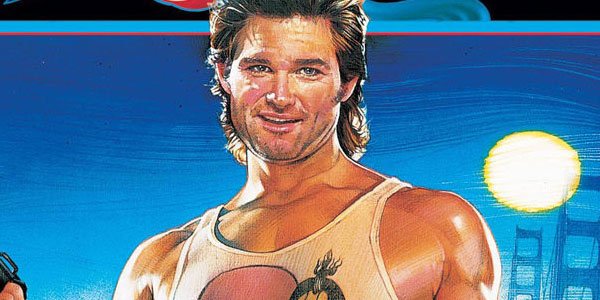
Budget: $25 Million
Gross: $11 Million (Exact worldwide numbers unknown, estimated at approximately $20M)
Much like the aforementioned Highlander (’86 was a good year), this one just tosses in a bit of every genre. There’s fantasy, action, horror, and romance. But the prevalent mood is definitely comedy, which was relatively new territory for legendary horror director John Carpenter.
Teaming once again with frequent muse Kurt Russell, Carpenter brings to life a truly unique world, combining ancient Chinese mysticism, Old West bravado, classical romance, and nightmarish creatures in a modern-day setting.
When Wang Chi’s fiance Miao Yin is kidnapped, he enlists his friend, abrasive trucker Jack Burton, to help find her. Their search takes them deep into the underground of San Francisco’s Chinatown, where they are forced to do battle with the minions of Lo Pan, who most believe to be a myth rather than a man. But the 2,000 year old sorcerer is all too real, and he has nefarious plans for Miao Yin.
The mismatched pair are helped along the way by a tour bus driver, a lawyer, a reporter, and a maitre’d. Makes perfect sense, right? That’s the kind of bonkers logic that prevails throughout the film. It could have been ridiculous, but the great performances, snappy dialogue, unique story, and mysterious ending came together to make something that is a brilliant parody of itself. And when I say “snappy dialogue,” I mean it’s probably the most endlessly quotable film of all time. Literally every line is a hilarious classic.

When it performed very well with test audiences, Carpenter thought he had a hit on his hands. However, the towering classic Aliens was released the very next week, and the film quickly faded from the public’s mind. Fortunately, home video was just beginning to become a common thing, and the VHS sold like mad. Among the numerous classics John Carpenter has helmed, Big Trouble is considered by many to be his greatest work.
2. Dredd (2012)
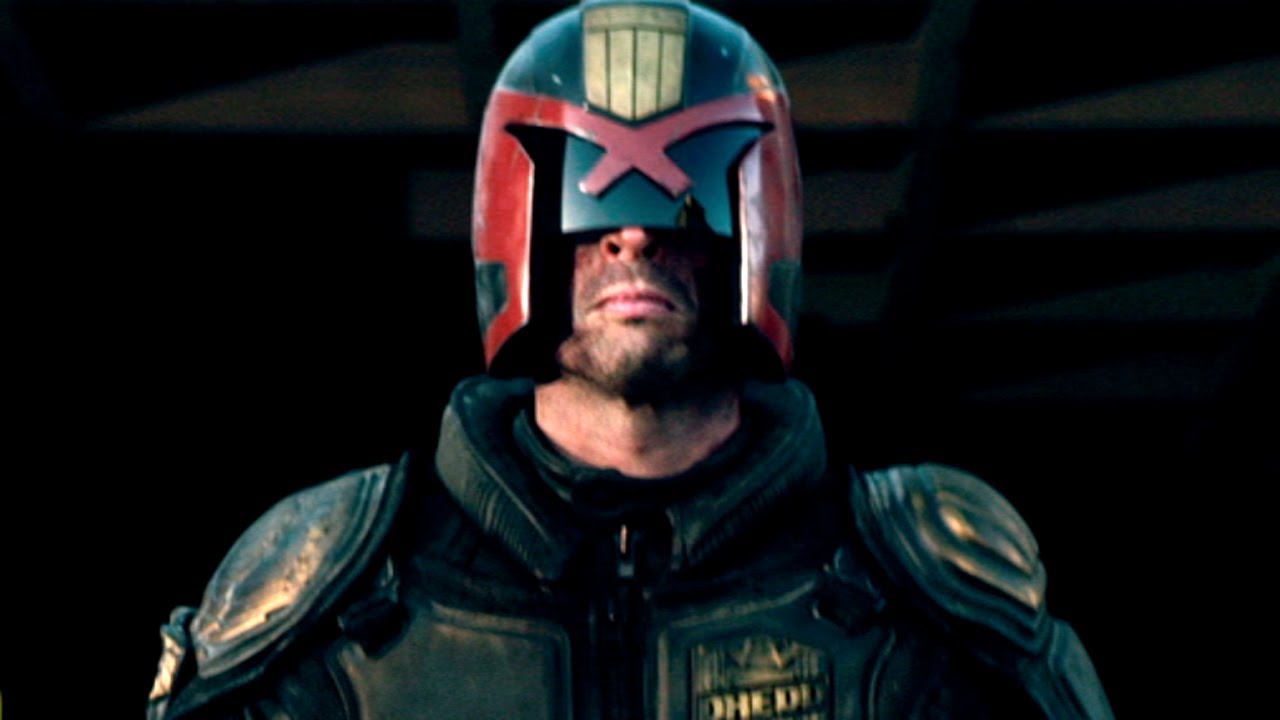
Budget: $35 Million
Gross: $13 Million ($35M Worldwide)
You knew this one would be here. Alex Garland’s tale of a crime-ridden dystopian future was a perfect adaptation of the classic British comic.
After worldwide nuclear fallout, the inhabitable zones are divided into “mega-cities,” urban hellholes with populations in the hundreds of millions. Crime rises to astoundingly unmanageable rates, and law enforcement simply can’t keep up. From these terrible conditions, Judges arise. A new breed of police officer, Judges are also juries, and, if need be, executioners. All crimes are assessed immediately, and sentences carried out instantly. Being a Judge is not for the faint of heart. Only the strongest wills and minds are accepted into the Hall of Justice.
On the morning our film begins, we meet one Judge Joseph Dredd. After handling a van full of perps in a most efficient manner, he reports to the HoJ to receive his assignment for the day. He is to take a rookie out for assessment. By his word, she will either pass or fail in her attempt to become a Judge. Cassandra Anderson is nervous, unsure of herself, but determined to make a difference on the streets of Mega-City One.

After reporting to the scene of a double homicide in the slum block known as Peach Trees, the two Judges are targeted by the building’s resident crime lord. Madeline Madrigal, aka Ma-Ma, is a soulless, ruthless tyrant who has no compunctions about using torture and murder to get what she wants. In fact, the murder the Judges were investigating was committed on her orders, and it was neither quick nor painless.
The block is closed off. Communications are shut down. And there is a price on their heads. The two must survive the night, while being hunted by hundreds of Ma-Ma’s minions. But the murder-minded denizens of Peach Trees aren’t counting on the determination and iron will of the Judges. The pair make their bloody way up towards the 200th floor, leaving a massive body count in their wake.
On the top floor, Ma-Ma herself is waiting. None of her hired hitmen have been able to dispose of the two, so she’s going to do it herself. But Dredd has also been waiting to deal with her. She is a criminal, and he is the Law. Justice will be served.
I am literally incapable of telling you how great this movie is without fangirling. Hard. I’ve always loved action movies, and it’s one of the finest ever made, in this writer’s humble opinion. There is no wasted space, no throwaway lines, not one second of non-essential celluloid. It’s a lean, mean, action-packed film that leaves you begging for more when it’s over.
Sadly, most people realized this on home video. Its theatrical run made diddly shit for profit, for two main reasons. One is the dreaded poor marketing – it had one of the worst trailer campaigns I’ve ever seen. They showed nothing of what the movie was really about, gave theatergoers no reason whatsoever to want to see it. And then, of course, there was the dreaded Stink of Stallone. Don’t get me wrong, I mostly like his movies. But his 1995 film was so indescribably awful that no one, outside of 2000 AD readers and hardcore Karl Urban fangirls, was gong to plunk down their hard-earned dinero to see anything with the name Dredd attached to it. You made that mistake once, why would you do it again?
However, thanks to the small but dedicated fanbase who actually bothered to see it in its theatrical run, the film found new life on DVD and blu-ray, becoming one of the best-selling home videos of all time. An online campaign petitioning for a sequel or series has hundreds of thousands of signatures, and even has the endorsement of 2000 AD. The fight to return to Mega-City One is not over.
1. John Carter (2012)

Budget: $315 Million
Gross: $73 Million ($286M Worldwide)
This one is personal for me, maybe even more so than Dredd. My mother, long before I was ever born, had fallen in love with Edgar Rice Burroughs’ Barsoom series, and the ancient hardback collection, one of her prize possessions, sat on a shelf too high for me to reach. But she told me the stories about John Carter of Earth, and Dejah Thoris of Mars, of Tars Tarkas, of the creatures known as Therns and Tharks, of a world called Barsoom.
So when we found out that a film was being made about her beloved John Carter, we were both excited to see it, but also apprehensive. I mean, how often does Hollywood get it right? The book is always better – but not this time. This extremely faithful adaptation of the novel A Princess of Mars did not disappoint. The plot, the characters, even the appearances of the various Martian races were spot-on.
John Carter was a Civil War soldier. After the war, he becomes a prospector out west. The Army attempts to re-recruit him to fight the Apache, and they don’t take his refusal lightly. On the run from the cavalry, he hides in a cave, where he finds a strange-looking medallion. The next thing he knows, he awakens in a barren desert. Trying to find his way back to familiar territory, he discovers that he can run and jump with superhuman speed and strength.
Before long, he meets a beautiful woman named Dejah Thoris, who introduces herself as the Princess of Helium. Dejah and a few extremely strange-looking beings soon help him to understand that he is farther from home than he ever imagined. This world is called Barsoom, and it is being torn apart by both civil unrest and the fact that the land itself is dying. Limited resources pit many different races against each other. With his military background, his inherent sense of fairness, and his strong desire to never see war again, Carter unexpectedly finds himself attempting to bring peace to this strange land. Only much later does he realize something truly unbelievable – Barsoom is, in fact, the planet Mars. Seeing his beloved Earth glittering like a star in the distance is more than he is prepared to process.
But soon, his resolve returns, and he decides to find a way back home. But he’ll need another medallion. In the meantime, he promises Dejah that he will keep her safe. Many amazing battle scenes later (and a few romantic ones too), Carter has his medallion, but he is now torn between returning home, and staying on Barsoom with Dejah and the Tharks, who have accepted him. He finally chooses to stay and marry her, becoming the Prince of Helium. On their wedding night, he decides to get rid of his medallion, but is instead tricked and returned to Earth against his will. He then devotes every waking moment to trying to find a way to return to his beloved and his new home.
If that sounds a bit rushed, it’s because telling the whole story would require, frankly, an entire book. Or, in fact, a series of them. Three films were planned about the Earthling’s adventures on Mars, but the plans for the other two were scrapped when the first one underperformed.

So, why did this fascinating, classic tale not take off in theaters? There are a few reasons, but we’ll stick with the two most glaring. First, the woefully inept marketing campaign, or lack thereof. The book’s title, A Princess of Mars, was changed to John Carter of Mars, and then simply John Carter. The name told absolutely nothing about the plot, and neither did the hastily compiled trailers. Essentially, if you didn’t know, you wouldn’t know.
And then – and I think this was by far the biggest mistake – there’s the fact that Disney gave complete creative, financial, and marketing control to a director making his first live-action feature. Andrew Stanton had made Disney a metric shit-ton of money with the animated hit Wall-E, so they just threw $200 million at him and let him run free. Unfortunately, he knew precisely nothing about making a live-action movie, and proceeded to dig the production into a massive hole. While doing so, he ignored the advice of Disney executives, other directors, and his own producers. He shot every scene dozens of times, had double the costumes made that were necessary, Basically, he was the wrong man for the job in every conceivable way.
Finally, months over schedule and a staggering $100 million over budget, Stanton delivered a film that he refused to pre-screen for critics – which most take as a sign that a movie is of low quality. Given the film’s poor marketing, its $286 million earnings are actually pretty impressive, and would be considered at least a moderate success for most movies. However, thanks to Stanton’s bloated budget (and the Hollywood accounting we discussed at the beginning of this story), John Carter needed to bank a massive $600 million just to break even. Only a handful of films in history have made that much at the box office. Sadly, it was screwed right out of the gate.
It’s a real shame too. These stories are essentially the genesis of modern science fiction. They’re extraordinarily imaginative, and they deserve a proper adaptation of the entire series – and fans deserve it too. Taylor Kitsch and Lynn Collins made a wonderful John Carter and Dejah Thoris, and the fact that, if we ever see the characters on the big screen again, it most likely won’t be these actors playing them, is a real travesty. Hollywood owed Burroughs, his characters, and a century of loyal readers so much more than they delivered.
What do you think about these films, their financial performance, and their place in the lexicon of modern classics? Do you think we missed any other movies that should have been included in this list? Let us know!

